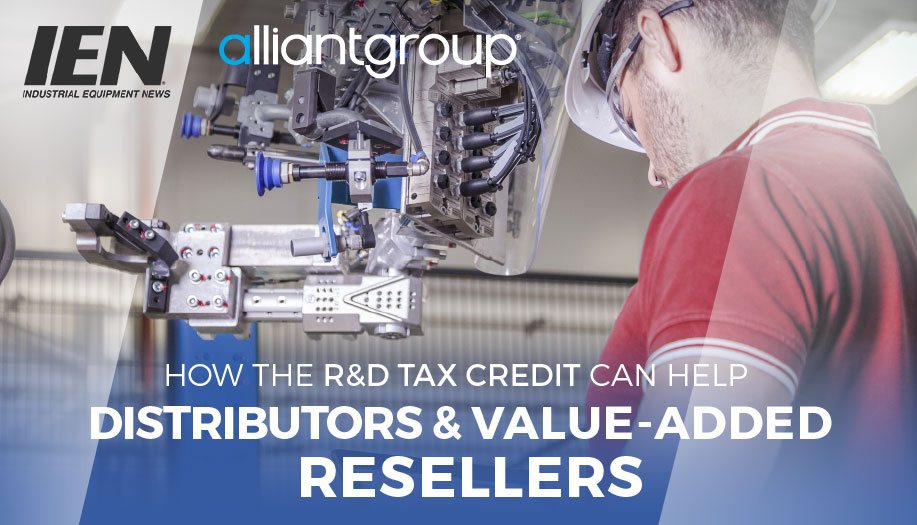January 31, 2019
by Tracy Lustyan, alliantgroup Managing Director
Published in Automation.com
The word “automation” has both sent chills down the spines of American workers and filled business owners with glee.
The debate over automation generally has individuals falling into two camps: those that fear its impact on jobs in the country, and those that say the potential for automation to increase production will only help bolster our economy. Regardless of where anyone falls in that discussion, the truth is this: automation is coming, and it’s coming fast.
Industries like retail and IT robotics stand to see billions in market increases in the near future. Also, between 39 and 73 million jobs have the potential to be automated by 2030, but less than five percent of occupations involve activities that can be “fully automated.” Further, the Wall Street Journal recently wrote that “The more robots a country has, the higher its gross domestic product and, on average, the richer its citizens.”
Proponents of automation also claim that new jobs will be created, and that those in the American workforce whose jobs are taken over or supplemented by automation are more than likely to transition into new and different roles that complement the new technologies.
The good news for anyone involved with automation, whether it’s a business owner or engineer designing the automation mechanism, is that there’s a direct financial incentive to continue innovating in the automation realm.
Pushing for Innovation
Those looking to offset the costs of development and implementation of automation tools should look at the R&D tax credit, which saves U.S. businesses $10 billion every year. The credit was implemented in the late 1980s as a way to encourage domestic corporate innovation. Today, the credit is the American government’s incentive to award companies who are both keeping technical jobs in the U.S. and pushing industry progress.
Legislative changes, including the 2015 PATH Act, not only made the credit permanent, but also expanded the availability of the incentive. For example, businesses with less than $50 million in gross receipts are now able to claim the credit against their alternative minimum tax (AMT), which makes the incentive more lucrative for smaller businesses.
In order to qualify for the R&D credit, a company simply needs to invest time, money, and resources into the advancement or improvement of one of its products or processes. No lab coats test tubes or heavy engineering presence required.
The highly technical nature of automation makes companies who use or develop technologies in the field great candidates to claim the credit. Automation has already touched a vast array of industries like agriculture, automotive, food processing, and equipment suppliers, further increasing the number of companies who are likely eligible.
Creating a Competitive Edge
The beauty of the credit is its ability to put money back in the hands of the innovator in order for them to continue paving a path of progress.
Activities involving automation that might qualify include, but aren’t limited to:
- Designing custom automation machinery and robotics
- Custom software to improve efficiencies
- RFID, PLC or HMI Systems
- Remotely controlling field/ factory operations
- Streamlining data acquisition through visualization technology and instrumentation
- Devising automation solutions for multiple applications
One example of an American business taking advantage of the R&D credit came when a meat processor’s project entailed the development of a large processing line, including 30 pieces of equipment.
The company was contracted to retrofit several existing rooms and systems, providing all programming, equipment, automation, and material handling, while upgrading and customizing to provide optimal performance.
Multiple iterations were developed to meet all project parameters as well as a custom system dealing with high viscosity brine, and a highly unique set of tanks made to deal with a protein application; each requiring very high polishing, control, measurement, and temperature controls. This meat processor was able to claim $540,000 in federal credits for its efforts.
Regulation in a New Light
Companies who are faced with the challenge of adapting technologies in order to meet regulatory obligations should also take the credit into consideration. For example, a products development company claimed roughly $245,000 in federal credits by undertaking various qualifying projects to help manufacturers meet governmental requirements.
The R&D credit has consistently helped to spur the U.S. economy by allowing American companies to reinvest millions of dollars back into their business, creating a cycle of innovation that has untold potential.
So, wherever a business might fall in the debate over automation and its impact, if there’s a chance of a business activity qualifying for the incentive, it’s worth taking a look and potentially creating that competitive advantage.
 Tracy Lustyan is the Managing Director for the Great Lakes Region and is based in alliantgroup’s Chicago office. Her focus is on clients in the Midwest, primarily in Illinois, Missouri, Minnesota and Iowa. Tracy has a vast knowledge of government-sponsored incentive programs that are designed for the benefit of U.S. businesses, including her work with the R&D Tax Credit, IC-DISC, DPD and hiring incentives.
Tracy Lustyan is the Managing Director for the Great Lakes Region and is based in alliantgroup’s Chicago office. Her focus is on clients in the Midwest, primarily in Illinois, Missouri, Minnesota and Iowa. Tracy has a vast knowledge of government-sponsored incentive programs that are designed for the benefit of U.S. businesses, including her work with the R&D Tax Credit, IC-DISC, DPD and hiring incentives.
Would you like additional information or do you have questions?


